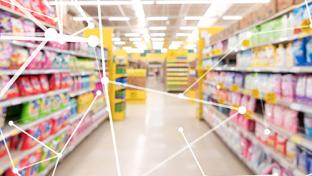Why Going Cashless Isn’t a Viable Option for Grocers
The old adage that all politics are local – meaning that voters care about the issues that matter to them most – is applicable to the grocery store industry in many ways. Although technological advances like self-checkout and ecommerce are causing sweeping changes in the industry, what today’s grocery shoppers really want is choice.
In fact, consumer choice dominates the modern marketplace. Think about how customers’ grocery shopping habits have changed: buying online or in-store; self-scanning their groceries or checking out with a cashier, and paying with card, check, contactless payment or cash. It’s all about choice – and cash is still an option.
Although headlines in recent years have predicted moving to a cashless society, we’re simply not there yet. Many retailers have experimented with going cashless for a while, only to subsequently decide to go back to accepting bills and coins as a form of payment after growing consumer criticism and backlash. So why do we continue to question the importance of cash as a payment option?
In an ultra-competitive landscape, grocers should know that going cashless is simply creating another obstacle in their customer experience, as consumers want a choice in how they pay.
However, there are many ways that food store operators can improve how cash is managed from the time it enters the grocery store to when it leaves.
What’s Trending Today
From independent locations to larger grocery store chains, competition extends beyond other brick-and-mortar locations and into nontraditional food retailers that include Amazon, convenience stores and even department stores. As such, traditional grocery stores must always look for ways to up their game.
As such, they’re installing interactive digital signage to allow greater interaction with shoppers, pushing coupons through their own apps, and using loyalty programs to gather data from shoppers and drive sales.
And while there’s a rise in online food shopping, a recent IDC Retail Insights survey indicates that online shopping isn’t on the radar for one-third of consumers. There’s something to be said about squeezing their own produce, sipping a fresh cup of coffee and getting a live cooking demonstration, with samples included.
Despite the growth in ecommerce, grocers that are taking a more customer-centric approach are successfully luring people into stores to shop the good, old-fashioned way: with a basket or a four-wheeled shopping cart.
Cash Remains a Popular Payment Method
Similarly, more and more grocers are accepting multiple forms of payment, including contactless methods – a particular concern during the COVID-19 outbreak. And while cash may not be the most popular way for people to pay for their groceries, some shoppers still prefer to use it. They find it the safest and easiest way to pay for groceries and by paying with cash, they might even indulge in impulse shopping. In fact, in a survey of 1,000 Americans on their preferred payment methods, GoBanking Rates found that more than 37% of respondents choose cash.
Without adequate technology, however, managing cash can be inefficient and time-consuming: Think counting multiple drawers several times a day, by hand. To cut down on the cost of using cash, some grocery stores have invested in technology such as count-by-weight (CBW) cash-counting devices.
A leading supermarket chain in Asia, for instance, purchased these machines to help improve efficiency; achieve a step change in process controls, access and transfer data; and increase accuracy of records and security in regard to cash handling. The CBW devices provide auditable records, allowing managers and cashiers to sign off on cash counts, which improves accountability and control without any complexity. An additional benefit is that it frees up store staff for more important, customer-facing tasks.
Give Consumers What They Want
According to Cardtronics’ Health of Cash survey, consumers who use digital payment methods also still use cash. What they want is choice. In terms of payment preference, cash ranked second, at 27%, behind debit cards, at 33%, but that’s still a lot of cash to handle.
Consumers like cash because it doesn’t leave a trail of their purchases, which can be tracked by advertisers and banks. And they deem it safer than using other payment methods that might be susceptible to a data breach, such as credit cards or online payments.
Besides, many cities and states, including San Francisco, Philadelphia, New Jersey and Connecticut, have banned retail establishments from going cashless because it excludes certain groups of consumers.
Choice will continue to dominate the marketplace, and grocers will want to be able to accommodate the choices and preferences of their customers. By accepting any form of payment that consumers choose to use, grocers of all sizes can improve the customer experience and keep them coming back into the store.







